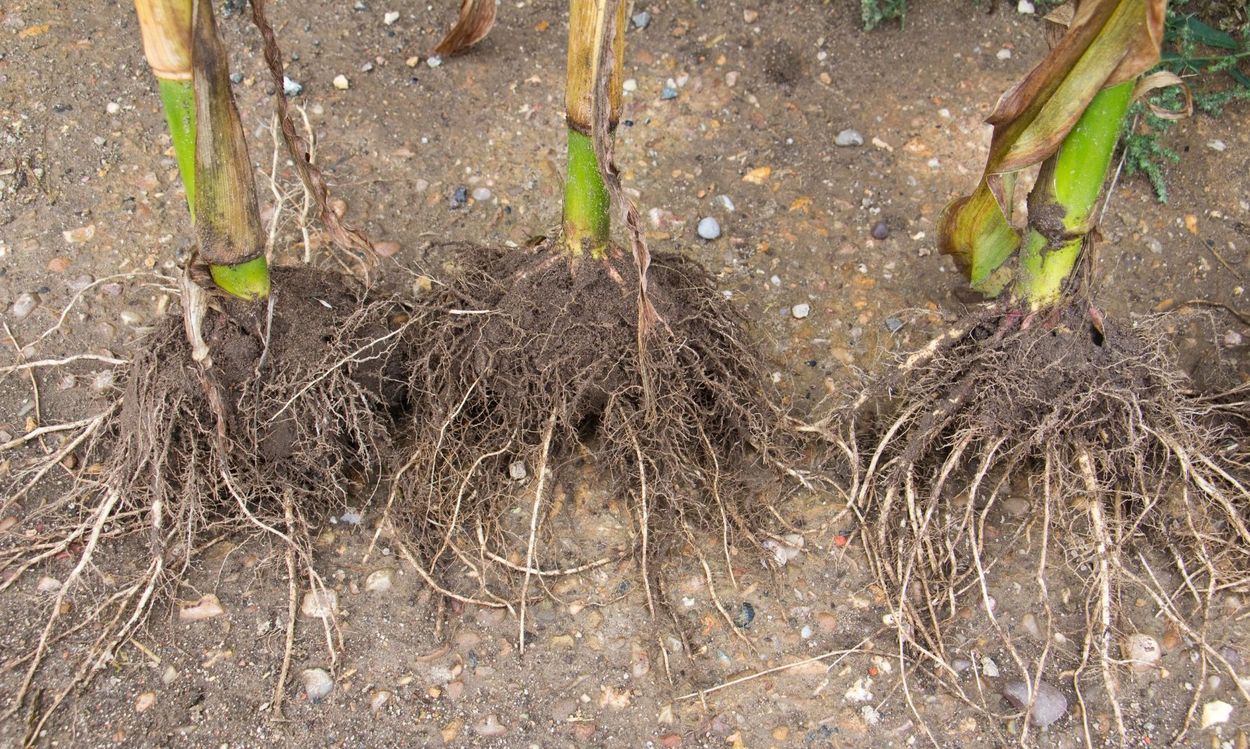
Mycorrhizae are fascinating fungi that form symbiotic relationships with plant roots. These underground allies play a crucial role in plant health and soil ecosystems. But what exactly makes them so special? Mycorrhizae help plants absorb water and nutrients more efficiently, boosting growth and resilience. They also protect plants from pathogens and improve soil structure. Imagine tiny networks of fungal threads connecting plant roots, sharing resources, and enhancing soil fertility. This relationship benefits both plants and fungi, creating a win-win situation in nature. Ready to learn more about these incredible fungi? Let's dive into 38 amazing facts about mycorrhizae!
What is Mycorrhiza?
Mycorrhiza refers to the symbiotic relationship between fungi and plant roots. This partnership benefits both organisms, enhancing nutrient uptake for plants and providing carbohydrates for fungi. Let's dive into some fascinating facts about mycorrhiza.
-
Mycorrhiza comes from the Greek words "mykes" (fungus) and "rhiza" (root), meaning "fungus root."
-
Around 90% of land plants form mycorrhizal relationships, showcasing its importance in nature.
-
There are two main types: arbuscular mycorrhiza (AM) and ectomycorrhiza (EM).
-
AM fungi penetrate plant root cells, forming structures called arbuscules.
-
EM fungi form a sheath around roots, creating a network called the Hartig net.
Benefits of Mycorrhiza to Plants
Plants gain numerous advantages from their fungal partners. These benefits range from improved nutrient absorption to increased resistance against diseases.
-
Mycorrhiza enhances phosphorus uptake, a critical nutrient for plant growth.
-
It also improves nitrogen absorption, another essential nutrient.
-
Plants with mycorrhiza have better access to water, especially during droughts.
-
Mycorrhizal fungi can protect plants from soil pathogens by outcompeting harmful microbes.
-
They help plants tolerate heavy metal toxicity by binding metals in the soil.
Mycorrhiza and Soil Health
Healthy soil is crucial for plant growth, and mycorrhiza plays a significant role in maintaining soil health.
-
Mycorrhiza improves soil structure by binding soil particles together.
-
It increases soil organic matter through the decomposition of fungal biomass.
-
Mycorrhizal networks enhance soil aeration, promoting root growth.
-
These fungi help in the formation of soil aggregates, which improve water infiltration.
-
Mycorrhiza contributes to carbon sequestration, storing carbon in the soil.
Mycorrhiza in Agriculture
Farmers and gardeners can harness the power of mycorrhiza to boost crop yields and soil health.
-
Mycorrhizal inoculants are available for various crops, enhancing their growth.
-
Organic farming practices often promote mycorrhizal associations by avoiding chemical fertilizers.
-
Crop rotation and cover cropping can support mycorrhizal fungi in agricultural systems.
-
Reduced tillage practices help maintain mycorrhizal networks in the soil.
-
Mycorrhiza can reduce the need for chemical fertilizers, making farming more sustainable.
Mycorrhiza and Ecosystems
Beyond agriculture, mycorrhiza plays a vital role in natural ecosystems, supporting biodiversity and ecosystem stability.
-
Mycorrhizal networks connect different plant species, facilitating nutrient exchange.
-
These networks can help seedlings establish by linking them to mature plants.
-
Mycorrhiza supports forest health by enhancing tree growth and resilience.
-
In grasslands, mycorrhiza contributes to plant diversity and productivity.
-
Wetland plants also benefit from mycorrhizal associations, improving their growth in waterlogged soils.
Mycorrhiza and Climate Change
As climate change impacts ecosystems worldwide, mycorrhiza can help mitigate some of its effects.
-
Mycorrhiza enhances plant resilience to climate stressors like drought and heat.
-
It helps plants sequester more carbon, reducing atmospheric CO2 levels.
-
Mycorrhizal fungi can improve soil health, making ecosystems more resilient to climate change.
-
These fungi can help restore degraded lands by improving soil fertility and structure.
-
Mycorrhiza supports reforestation efforts by enhancing tree survival and growth.
Interesting Facts About Mycorrhiza
Here are some lesser-known, intriguing facts about mycorrhiza that highlight its complexity and importance.
-
Some mycorrhizal fungi glow in the dark due to bioluminescence.
-
Certain orchids rely entirely on mycorrhiza for their nutrient needs.
-
Mycorrhizal networks are sometimes called the "Wood Wide Web" because of their extensive underground connections.
-
Fossil evidence suggests that mycorrhiza existed over 400 million years ago.
-
Some mycorrhizal fungi produce antibiotics that protect plants from diseases.
-
Mycorrhiza can influence plant community composition by favoring certain species.
-
Some plants can switch between different types of mycorrhizal associations depending on environmental conditions.
-
Mycorrhizal fungi can form symbiotic relationships with non-vascular plants like mosses and liverworts.
The Hidden World Beneath Our Feet
Mycorrhizae, those tiny fungi, play a huge role in our ecosystem. They help plants absorb nutrients, improve soil structure, and even protect against diseases. These fungi form a symbiotic relationship with plant roots, creating a network that benefits both parties. Without them, many plants would struggle to survive, and our forests and gardens wouldn't be as lush.
Understanding mycorrhizae can change how we approach gardening and agriculture. By fostering these beneficial fungi, we can promote healthier plants and more sustainable practices. So next time you're in your garden or walking through a forest, remember the unseen allies working tirelessly below ground. They might be small, but their impact is enormous. Embrace the power of mycorrhizae and watch your plants thrive like never before.
Was this page helpful?
Our commitment to delivering trustworthy and engaging content is at the heart of what we do. Each fact on our site is contributed by real users like you, bringing a wealth of diverse insights and information. To ensure the highest standards of accuracy and reliability, our dedicated editors meticulously review each submission. This process guarantees that the facts we share are not only fascinating but also credible. Trust in our commitment to quality and authenticity as you explore and learn with us.
